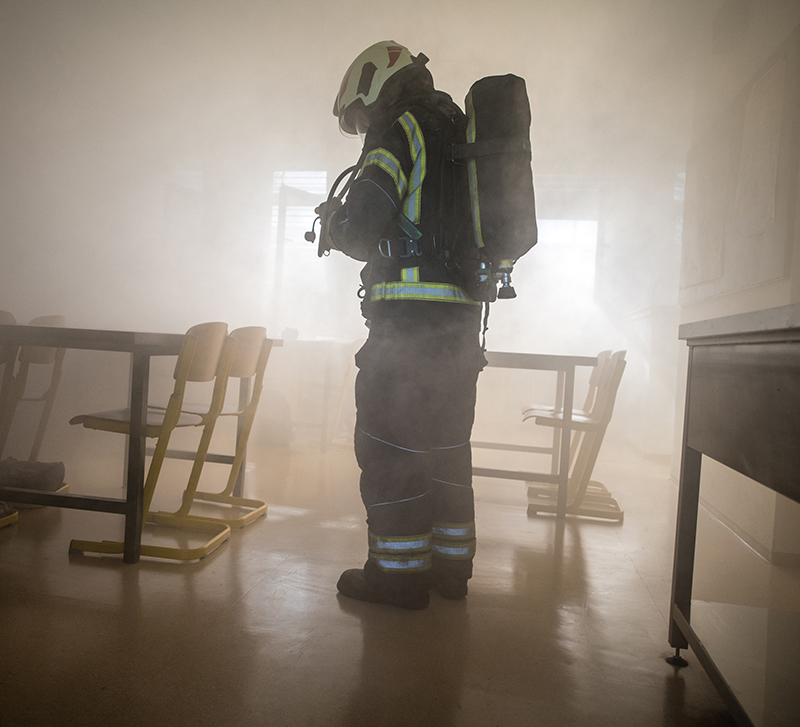
Facilities managers should have some familiarity with the Campus Fire Safety Right-to-Know Act. At most, they may have responsibility for fire safety and fill the role of “designated official” for reporting purposes. At the least, they may need to provide information on building fire-protection features as required for the Annual Fire Safety Report (AFSR). It is reasonable for facilities managers to believe that the Campus Fire Safety Right-to-Know Act is entirely the responsibility of public safety officials. However, while the Right-to-Know Act does include public safety aspects, it also differs in some ways from the Jeanne Clery Disclosure of Campus Security Policy and Campus Crime Statistics Act (Clery Act), which is primarily the responsibility of campus law enforcement.
The Campus Fire Safety Right-to Know-Act was authored and introduced in the U.S. House of Representatives by U.S. Representative Bill Pascrell (D-NJ) in the wake of the Seton Hall University dormitory fire in 2000. On July 24, 2007, U.S. Senator Frank Lautenberg (D-NJ) led the U.S. Senate in passing the Campus Fire Safety Right-to-Know Act as part of the Higher Education Act (HEA). The Campus Fire Safety Right-to-Know Act requires colleges and universities with on-campus housing facilities to maintain a log of fires in campus housing and annually provide certain fire statistics and an Annual Fire Safety Report (AFSR) to the U.S. Department of Education.
The Campus Fire Safety Right-to-Know Act is not part of the Clery Act. One important distinction is that under the Campus Fire Safety Right-to-Know Act, any student housing fire can be reported to any designated official at the institution, who must document it in the fire log and include it in statistics to be submitted to the U.S. Department of Education. According to The Handbook for Campus Safety and Security Reporting, an official is “any person who has the authority and the duty to take action or respond to particular issues on behalf of the institution.” For example, the official could be a fire safety manager in facilities management. Under the Clery Act, a crime must be brought to the attention of a campus security authority, the institution’s police department or campus safety office, or local law enforcement personnel.
The following are some important facts about the Campus Fire Safety Right-to-Know Act and its relationship to the Clery Act:
- Both acts are within the HEA and both have similar requirements for reporting to the U.S. Department of Education.
- Both acts require statistics to be submitted online through the U.S. Department of Education’s Campus Safety and Security Survey.
- The AFSR may be published concurrently with the Annual Security Report (ASR) if the ASR clearly states that it contains both the ASR and the AFSR. If the institution chooses to publish the AFSR separately from the ASR, it must include information in each of the two reports about how to directly access the other report. Much of this policy was implemented with the intent of reducing institutional burden. For example, institutions with one person who does fire safety and security would only need to submit the information required for the Campus Fire Safety Right-to-Know Act and the Clery Act on one website and create one combined AFSR and ASR report.
- Requirements of the AFSR and ASR, as well the statistics for the Campus Fire Safety Right-to-Know Act, are stipulated in the same sections of the Code of Federal Regulations without referring to the specific act from which the provisions came. These requirements can be found in 34 CFR Section 668.49, “Institutional fire safety policies and fire statistics,” and 34 CFR Section 668.41, “Reporting and disclosure information (e) Annual security report and annual fire safety report.”
In addition to the designated official, there are other Important distinctions between the Campus Fire Safety Right-to-Know Act and the Clery Act:
- The Campus Fire Safety Right-to-Know Act requires that only fires reported in on-campus housing facilities are included in statistics submitted to the U.S. Department of Education. Clery Act crime reporting and statistics submitted to the U.S. Department of Education are subject to “Clery Geography,” which can be expansive and often challenging to determine.
- Under the Campus Fire Safety Right-to-Know Act, statistics for fires of all causes in on-campus housing are reported to the U.S. Department of Education. Under Clery Act crime reporting, only fires caused by arson (intentional) in the “Clery Geography” are included in statistics reported to the U.S. Department of Education.
What may be most important to facilities managers is that the Campus Fire Safety Right-to Know Act requires the AFSR to include “a description of each on-campus student housing facility fire safety system, including fire sprinkler system” and “plans for future improvements in fire safety, if determined necessary by such institutions.” Institutions are essentially required by federal law to make public the features of fire protection in their residential facilities. This is an incentive to assess fire and life safety systems and can provide an opportunity to showcase the institution’s commitment to fire safety.
Passing of the Campus Fire Safety Right-to-Know Act was an effort undertaken by advocates including institutions, organizations, and government leaders passionate about fire safety on college campuses. The legacy will be the improvements to programs and facilities that create a fire-safe environment on the nation’s college and university campuses.
Alan Sactor is the University of Maryland Fire Marshal and assistant director at the Department of Environmental Safety, Sustainability and Risk. Alan is also vice president at the Center for Campus Fire Safety and a member of the APPA Standards and Codes Council. He can be reached at [email protected].
Code Talkers
Code Talkers: Highlights the various codes, laws, and standards specific to educational facilities and explains the compliance issues and implications of enforcing these measures. To contribute, contact Kevin Willmann, FM Column Editor.
See all Code Talkers.


